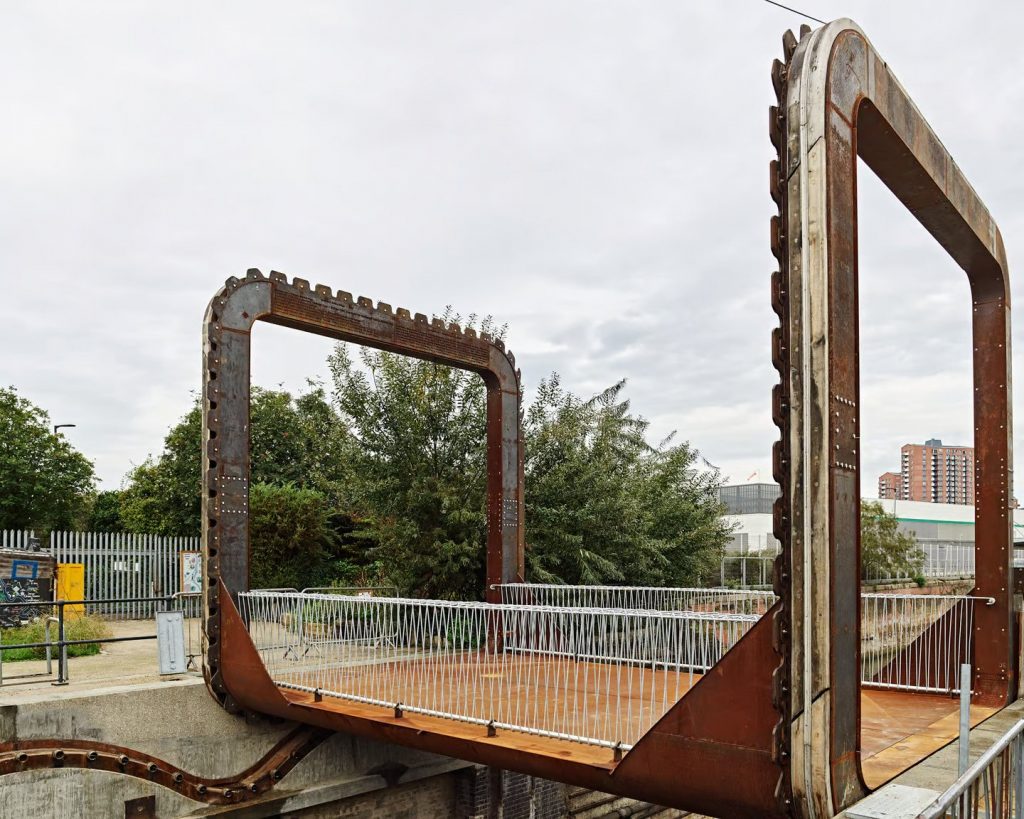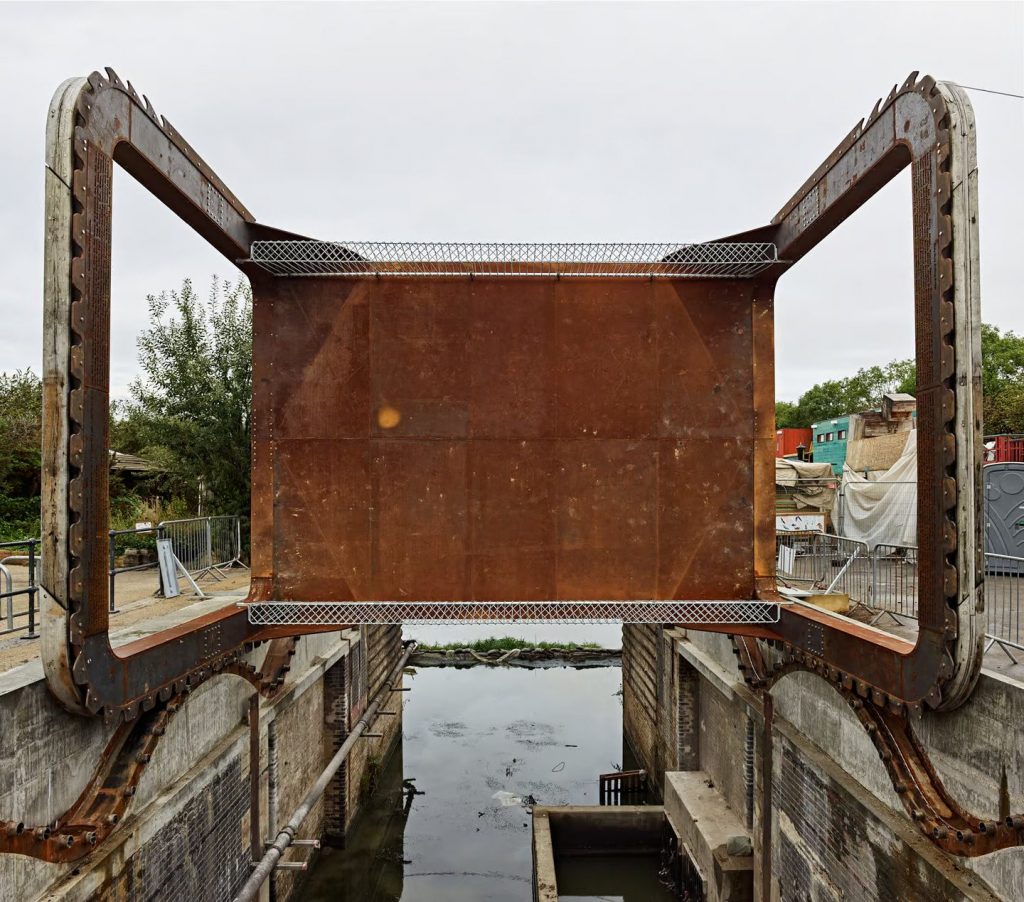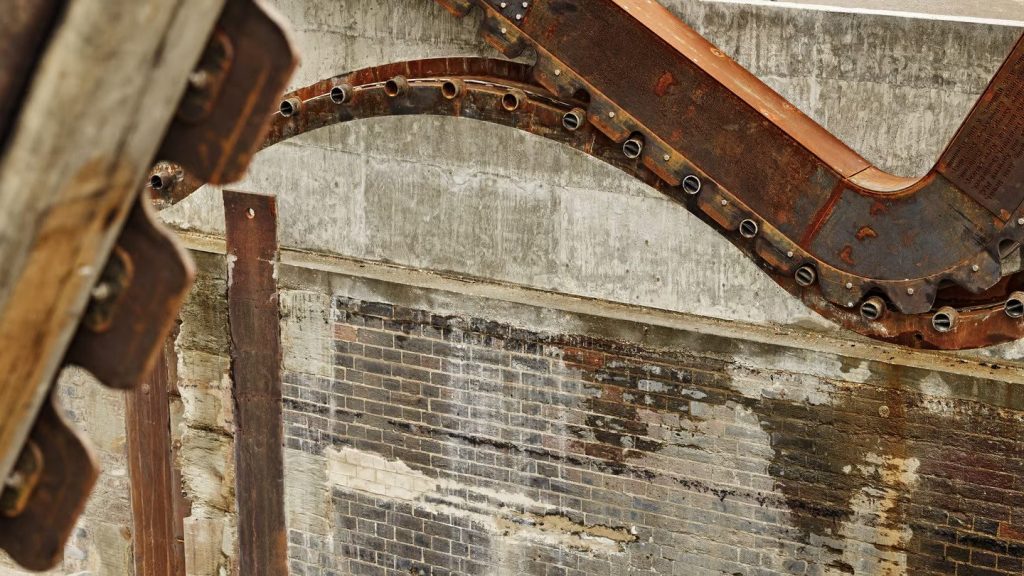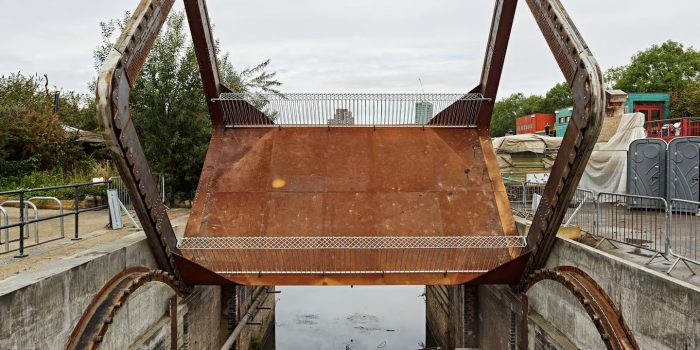The recently completed footbridge, named the Cody Dock Rolling Bridge, is a unique crossing that is not the easiest nor the most practical way to get people across a river, but it is undeniably one of the most creative. It has the ability to roll a full 180 degrees to make way for boats to pass under it.
The project was realized as part of a larger redevelopment of a former industrial dock area in London, England, which is now home to an artistic community transforming it into a creative hub.

As part of the renovation, an old dam on the site had to be removed, and a new footbridge was constructed to reopen the dock to a nearby river’s tidal waters.
Initially, Simon Myers, of Gasworks Dock Partnership, had planned to install a traditional bascule bridge for the site. However, when architect Thomas Randall-Page heard of these plans, he pitched a more ambitious idea for a rolling bridge.

With the support of engineer Tim Lucas, they were able to persuade Myers to go ahead with their proposal, resulting in the Cody Dock Rolling Bridge.

“Raising, swinging, sliding, folding and tilting … the solutions to the challenge of the opening bridge are many and varied,” said Randall-Page’s press release. “Seeing the potential for public spectacle inherent in the opening of a bridge, Thomas set about adding to this long-established list of motions. Rolling along to the channel it crosses, this unique bridge design owes much to its Victorian forbears.
“They knew that moving large heavy structures efficiently requires that they are part of balanced systems, and this design works on the same principle of equilibrium. Part of an ambitious community-led regeneration project, we hope this revolutionary bridge will become an important landmark and a symbol of the dynamic creative community which is growing here.”
Constructed from weathered steel and oak, weighing 13 tons (almost 15 US tons), the resulting bridge is partly inspired by Victorian-era infrastructure such as canal locks. Cyclists and pedestrians can cross the bridge in its usual position, like a normal bridge.
However, when a boat needs to pass under it, the bridge can roll on a pair of tracks installed into the concrete abutments on either bank. Steel teeth installed on the ends of the bridge allow it to significantly increase headroom for the boats. This process takes about 20 minutes, ensuring safety despite how fast it appears in the timelapse above.
The bridge contains scrap metal and concrete ballast that counterbalances the weight of the deck, enabling it to smoothly roll through a full 180 degrees until it comes to a stop at a fully inverted position.
Impressively, the entire structure is carefully engineered and requires no motors or electricity to move. Instead, hand winches power it entirely.


